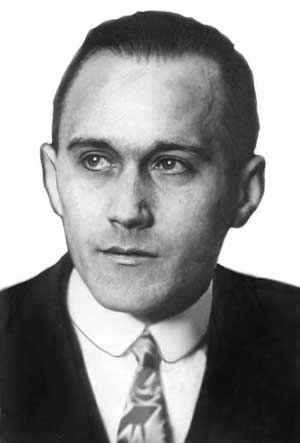Early Electronic TelevisionKalman Tihanyi
Kalman Tihanyi was a Hungarian physist and engineer, born in 1897. In 1928, Tihanyi went to Berlin, where the development of mechanical television involving Nipkow disks had already been begun by the German Post Office and the larger manufacturers. He set up his own laboratory in Berlin, where he made his first experimental picture tube with his younger brother, who also was an electrical engineer. The problem of low sensitivity to light resulting in low electrical output from camera tubes would be solved with the introduction of charge-storage technology by Tihanyi in the beginning of 1924 His final design was patented under the name "Radioskop" (Hungarian patent: T-3768) in 1926. He described his cathode ray tube, charge-storage television system in not one, but in three versions - wired, wireless, and color, which meant he was thinking of color television even when black and white films were made in the vast majority of the film industry. His patent application contained 42 pages detailing its design and mass production. Though it bears certain similarities to earlier proposals employing a cathode ray tube (CRT) for both transmitter and receiver, Tihanyi's system represented a radical departure. Like the final, improved version Tihanyi would patent in 1928, it embodied an entirely new concept in design and operation, building upon a technology that would become known as the "storage principle". This technology involves the maintenance of photoemission from the light-sensitive layer of the detector tube between scans. By this means, accumulation of charges would take place and the "latent electric picture" would be stored. .The invention was received with enthusiasm by Telefunken and Siemens, but in the end, they opted to continue with the development of mechanical television. Then he was approached by the American Radio Corporation of America (RCA), contracted with him to purchase his patent, and began laboratory development of the camera tube. After a few months, the first well-functioning American camera tubes based on Tihanyi's ideas were completed by Vladimir Zworykin at RCA, and the new television system was named the iconoscope. |

